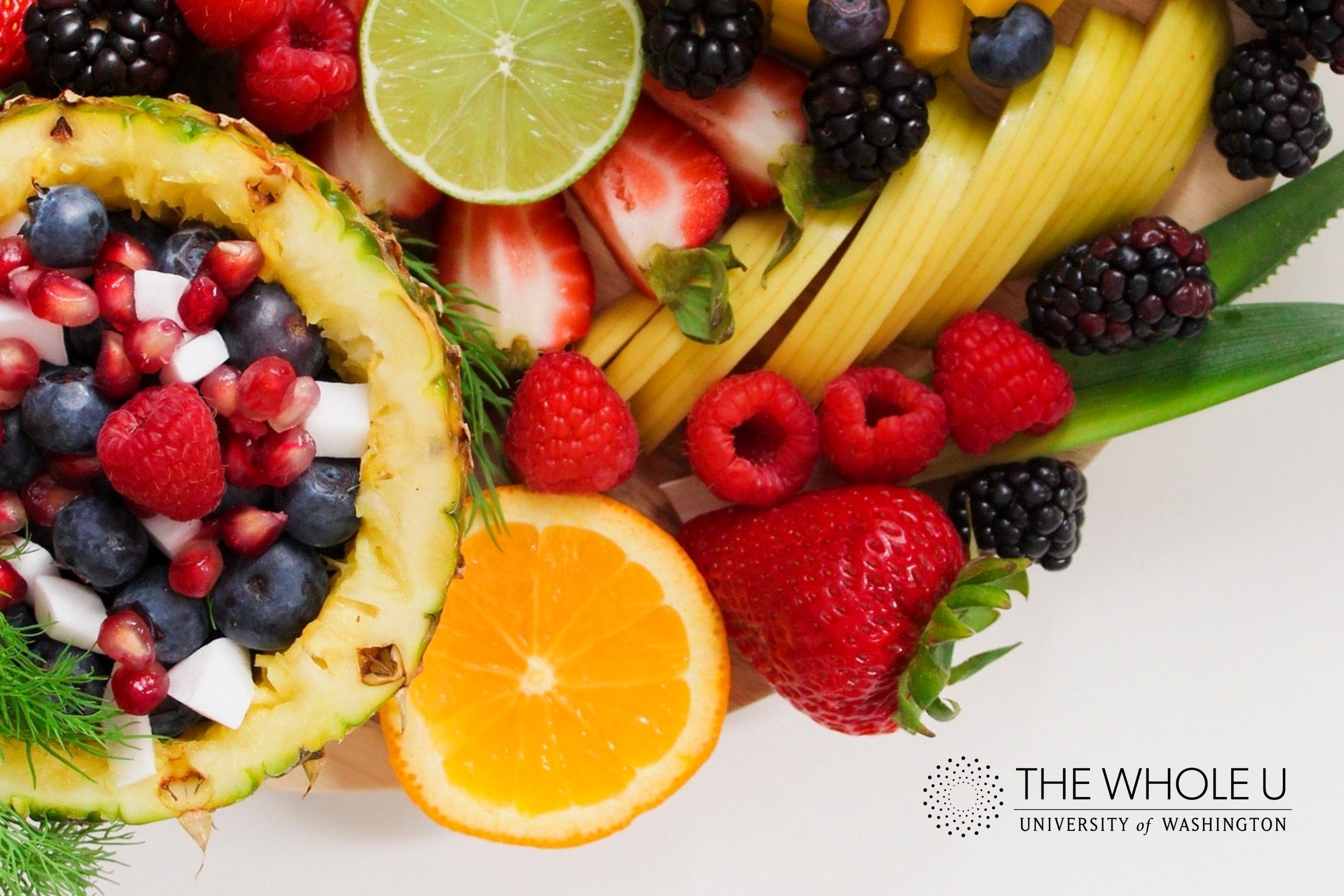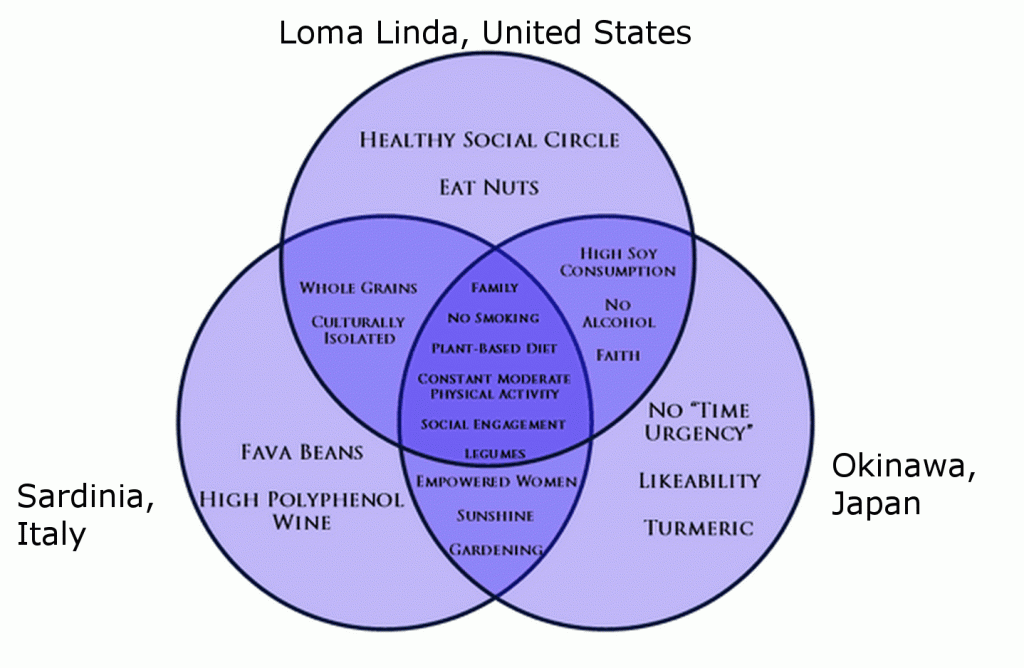
Eating for Longevity is Easier Than You Think
Planning a trip to visit my 107-year-old grandmother got me thinking about longevity. What does it take to live to age 100? Or even just add a few years to our lives? Is there more to it than just genetics? Is the secret to living a long and healthy life as simple as “eat more kale and blueberries?” But visit my grandmother and you might be surprised to learn what snacks sit on her countertop. I’ll give you a hint: they don’t include kale or blueberries.
A little research led me to the work of journalist Dan Buettner. In the early 2000s, Buettner and a team of researchers asked much the same question. With a grant from the National Institute of Aging (NIA), Buettner and his team set out to investigate the secrets to longevity in areas around the world where people were living long, largely disease-free lives. They identified 5 areas around the world, calling them Blue Zones:
- Sardinia, Italy
- Okinawa, Japan
- Nicoya Peninsula, Costa Rica
- Icaria, a Greek island in the Aegean Sea
- Loma Linda, Southern California
The research team found that the hypothesized “secret” to longevity was much more than just food or diet; it also included being part of a community, surrounding yourself with people who reinforce healthy behaviors, having a strong sense of purpose in your life, and being less sedentary.
Based on the research they conducted, Buettner and his team identified nine key factors that correlated behaviors in those regions. Together, these nine key factors are called the Power Nine: “move naturally, purpose, downshift, 80 percent rule, plant slant, wine @ 5, right tribe, community, and loved ones first” (read more about the Power Nine here).

As a registered dietitian, it struck me that dietary patterns of people living in the Blue Zone regions weren’t all that different from what the United States Department of Agriculture (USDA) or even the American Institute for Cancer Research (AICR) recommend as a “healthy diet.” With consciousness and effort, any community can strive toward this standard.
Slightly modified from the Power Nine, here are my four diet and lifestyle tips to add years to your life:
- Practice mindful eating. People living in Blue Zones weren’t on “diets,” yet they still managed to consume less calories compared to the average American. Most followed the 80 percent rule and stopped eating after they felt 80% full. They also enjoyed meals at the dinner table surrounded by loved ones instead of in front of computers, TVs, or cell phones. Read more about mindful eating here.
- Eat a mostly plant-based diet. Plant-based doesn’t have to mean being vegetarian or vegan. It just means that a majority of your diet comes from minimally processed, whole plant foods.
- Aim for 5-9 servings of fruits and vegetables every day. Get vitamins and minerals from food as much as possible, not supplements.
- Eat beans instead of meat for the main course; fava, black, soy, and lentils were staples in most centenarian diets. Start with easier to digest beans such as pinto beans, black beans, black-eyed peas, and lentils. Pro Tip: add a teaspoon of baking soda to the soaking water when preparing dried beans before cooking to make them easier to digest.
- For more on Blue Zone recipes and longevity superfoods check out Dan’s book called The Blue Zones Solution.
- Move more. I don’t mean running a marathon or even necessarily going to the gym. I mean looking for ways to include more movement into your every day. This can simply mean walking and biking more, taking the stairs instead of the elevator, and/or taking a walk on your lunch break.
- Okinawans in Japan gardened for hours; men in Sardinia hiked miles every day for their jobs as shepherds; and Adventists in Loma Linda took nature walks.
- De-stress. There’s no way around it—we live in a stressful world. However, finding small ways to de-stress every day can help. Seventh-day Adventists in Loma Linda pray, Greek Icarians take naps, and Sardinians do happy hour. How do you unwind?
Just making one small diet or lifestyle change and sticking to it over time has the potential to add years to your life expectancy. While the answer may not be as simple as “eat more kale and blueberries,” incorporating some of the Blue Zone lifestyle changes is simpler than you think. Keep in mind that it doesn’t have to be all or nothing. If you happen to overeat one day, try eating healthier the next day. If you can’t commute to work by foot or bike, make plans with a friend or family member to go for a walk after dinner or on a lunch break.
For evidence of success, look no farther than the continued efforts of Dan Buettner, who today is working to help towns and cities across the United States become more like those Blue Zone communities. No matter your age, there’s always room for a bit of balance.
Which brings me back to the example of my 107-year-old grandmother. She maintains a well-balanced diet. As for the snacks I will occasionally spot on her countertop? Cheetos and chocolate.
 Amanda Li is a registered dietitian nutritionist and certified nutrition support clinician who works in the Radiation Oncology clinic at the University of Washington Medical Center. Outside of work, she enjoys rock climbing, gardening, cooking, playing board games, and spending time with her dog, Hula.
Amanda Li is a registered dietitian nutritionist and certified nutrition support clinician who works in the Radiation Oncology clinic at the University of Washington Medical Center. Outside of work, she enjoys rock climbing, gardening, cooking, playing board games, and spending time with her dog, Hula.
3 Thoughts on “Eating for Longevity is Easier Than You Think”
On March 1, 2017 at 9:54 PM, Thomas Horbett said:
Liked this article, including cheetos and chocolate part. Its emphasis on exercise and environmental factors and food in lifespan are good. But genetics and disease are major factors as well I assume.
On March 2, 2017 at 11:23 AM, Matthew Leib said:
You’re right for sure, Thomas. I think what Ms. Li is driving at is that even with genetics and disease as major factors, there are little things anyone can do to make those chances at a longer life just a little better.
On March 19, 2019 at 7:17 AM, Linda H said:
Thank you for a great article that presented the information so concisely!
Comments are closed.